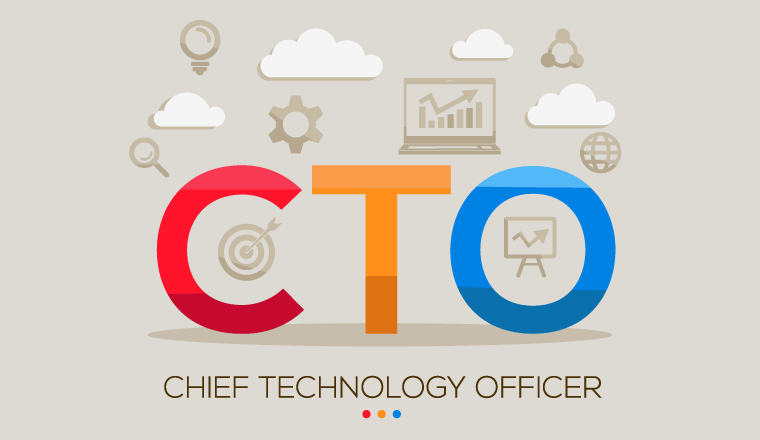The role of the chief technology officer encompasses far more than IT management. Learn what a CTO typically does for a business.
A CTO acts as the organization’s chief technology officer, keeping up with technological developments and putting new software to use to advance the company’s goals.
A CTO is a hybrid of an executive and an IT specialist, thus they require complementing abilities in both fields.
It’s crucial to have the appropriate technical expertise, academic background, and network to succeed as a CTO.
The target audience for this article is aspiring CTOs or small business owners who are thinking about hiring a CTO to oversee their IT department.
Technology and business are now closely related, and a chief IT officer’s (CTO) main responsibility is to ensure that a company’s technology strategy is in line with its long-term objectives. That does not always imply that a CTO is in charge of the help desks or IT division. Instead, they use their expertise in both established and developing technologies to offer a firm the finest long-term solutions.
According to Matt Mead, CTO of Chicago-based digital consultant SPR, the CTO position is crucial to organizational coherence.
The CTO, he continued, “can sort of make things come together and come to life in a way that you don’t see in a lot of businesses today. I think the CTO can be the glue between technology implementation and product strategy.”
Not every firm requires a CTO, but if you’re managing a quick startup or a company that deals in technology and trustworthy data, a CTO can offer advice. According to Mead, certain businesses that aren’t traditional technology companies but rather “data hubs for an industry” can require a CTO to make sure the technology they wish to develop is in line with business objectives and isn’t set up carelessly.
What duties does a CTO have?
In the United States, there are over 482,000 managers of computer and information systems, according to the Bureau of Labor Statistics. A CTO, however, performs a few additional tasks than an IT manager. At the same time, they play a different role from the CEO.
The CTO must:
Control the company’s current technological offerings.
serve as the company’s public face.
Recognize emerging technology.
Together with other executives, develop a budget for putting new ideas into practice and addressing issues.
Think about the company’s general objectives, strategic direction, and how technology influences important business choices.
Create and manage technologies for customers.
Make sure any programs exceed client expectations while keeping an eye on the competition.
It’s crucial to note that not all CTOs oversee an organization’s IT operations. While some CTOs oversee help desk staff and decide which digital solutions to deploy, many firms prefer to delegate these responsibilities to a chief information officer (CIO). The CIO places a strong emphasis on IT concerns and makes ensuring they are consistent with business objectives.
Mead stated, “I believe the CIO role is evolving as well, but I believe the CIO role is more infrastructure, keeping the lights on, and providing efficiencies from sort of an IT implementation and operations viewpoint.
Mead asserts that a CIO may be more concerned with day-to-day operations, whereas a CTO concentrates on product and strategy. This indicates that the CTO is more concerned with the larger picture than with minor technical concerns.
How to develop into a CTO
A CTO does not appear out of anything. Those that are passionate about anything IT are likely to already possess the skills required to work for a corporation. You’ll also need to work your way up into a managerial role starting small and learning the ropes.
Skills
The CTO role’s emphasis on the future is among its most significant features. Mead claimed that he typically makes plans three to six months in advance. This gives the business direction and necessitates that the CTO stay current on changes to the state of the art. Mead said that with the frequent modifications and changes to technologies like Microsoft Azure and Amazon Web Services, this can be a difficult undertaking.
He added, “If I had to sum up what I do in one line, it’s to keep SPR relevant.” The implication of this is that we must constantly be “looking out on the horizon and keeping an eye on things that are coming, specifically tools, techniques, and technology.”
To put a company (or client) in the best possible position, the CTO also needs to be aware of current technological trends. To operate a physical data center, a sizable amount of space and personnel are required. The need for data storage will keep rising even after there is no more room to construct new data centers. How are CTOs going to handle these changes in data management?
We divide our annual plan into the topics we generally want to work on, according to Mead. “The tactics I’m putting in place fit into and are in harmony with our priorities as an organization,” the employee said. “I feel like I really, truly understand well what it is we’re attempting to do organizationally.”
The CTO might work closely with the CEO to ensure progress toward the organization’s long-term objectives by managing direction and vision. Mead interprets this to suggest that the CTO ought to compete on an equal footing with the other chief executives. This enables the management of the organization to consult one another on strategic and financial issues.
Education
The majority of employers seeking a CTO prefer applicants with at least a bachelor’s degree and a wealth of IT management expertise. It’s difficult to get a job with a reputable company. You can never stop learning, not even after you finish your education. You must keep up with the most recent trends and amass relevant work experience.
Experience
Being the company’s representative of technology is another crucial duty of the CTO. This includes going to conferences to represent the company’s technological endeavors in a particular market as well as to learn more about relevant technological news. Mead claimed that to reflect SPR’s technological and commercial objectives, he speaks at conferences and seminars and gives interviews.
Find a mentor in the area and soak up all the knowledge you can. Connect with corporate executives to learn about their biggest IT needs. To improve your CV, try to discover how to solve their difficulties.
Make improving your people skills and technological management knowledge your top pastimes. Join a speaking group, enroll in a Dale Carnegie course, or sign up for an IT-related hobby group. The more time you invest in developing your skills, the more adept you’ll be at finding solutions on the spot.
How a CTO can help your company use technology more effectively
In a key executive position, the CTO is responsible for setting long-term technology objectives, following technological developments in the market, and collaborating with other executives to determine the direction of the organization. Even while not every business needs a CTO, this position can improve the compatibility of a product or service’s strategy with the business’s technological strategy.







